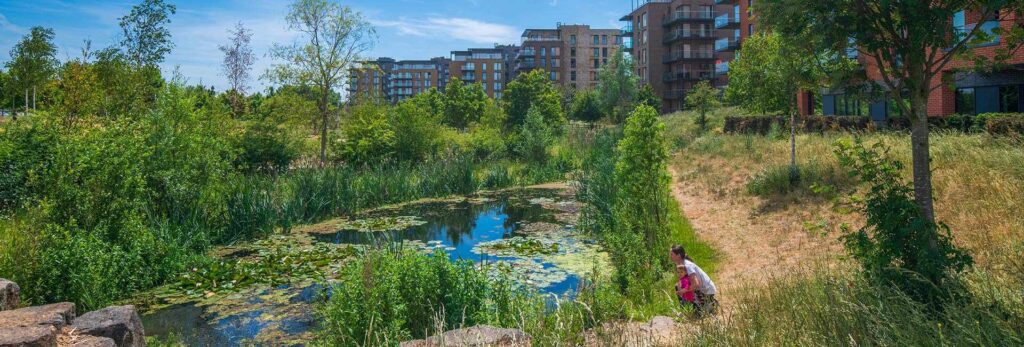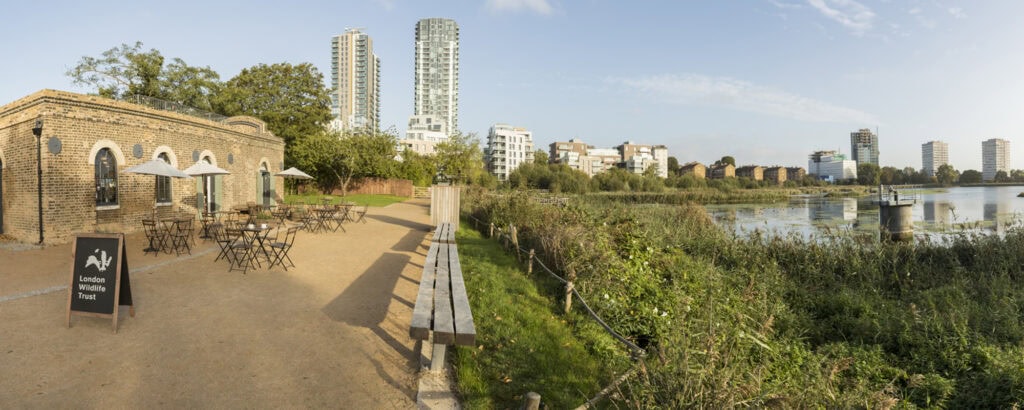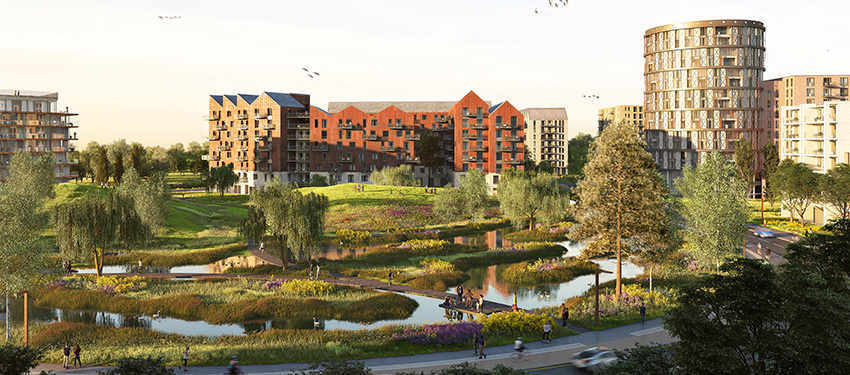Enhancing Nature

Key Sustainability Objectives/ Outcomes
Berkeley have now applied their Net Biodiversity Gain approach to 42 sites, with a total area of around 480 acres of new or measurably improved natural habitats. With an average net biodiversity gain of over 150%, the sites are demonstrably nature positive.
Most of these sites are in dense urban areas. By putting nature at the heart of their developments, Berkeley are providing multiple benefits for communities and nature including:
- Wilder landscapes which are more varied and interesting and where local communities want to spend more time.
- Provision of ecosystem services such as carbon sequestration, cooling and cleaning the air, absorbing stormwater and cleaning runoff and reducing pressure on sewage systems.
In 2021 Berkeley raised their target to deliver a minimum 10% net biodiversity gain on every site, regardless of its former use, and have committed to broadening their approach to Environmental Net Gain.
Notable Approaches And Solutions
Berkeley have developed their own biodiversity net gain toolkit, to help them make better choices and create more nature rich landscapes. They have also worked with experts to create a set of nine overarching design concepts which are considered in the earliest stage of planning. This helps to create nature-rich masterplans that deliver a measurable net gain, as well as community benefits. Berkeley’s approach has been recognised by the Environment Agency, Natural England and Defra.
Community engagement is also key. On many of Berkeley’s sites they work in partnership with local Wildlife Trusts and other conservation groups, helping to create nature that reflects the needs of each individual site. The partnerships also provide opportunities to engage local people in landscape volunteering and stewardship, bringing health and wellbeing benefits for the community, developing an increased sense of ownership and supporting the legacy of the sites.
Lessons Learnt
Committing to net biodiversity gain before it became a mandatory requirement meant that Berkeley had to work with their ecologist and landscape architect to ensure that they understood their approach and what it was trying to achieve.
Berkeley have also worked with their local communities and customers to engage them on the landscapes incorporated, and to ensure they are aware of the management regimes. As the landscapes are more natural and change with the seasons, making sure communities understand the changing landscapes and the chosen management regimes is vital, so that they are aware that the spaces are not being neglected but are being managed in a more natural way.



Related members
Related
Bricks providing nesting site for solitary bees

Planters enhancing biodiversity

Microclimate modelling solution

West Byfleet, Station Approach


